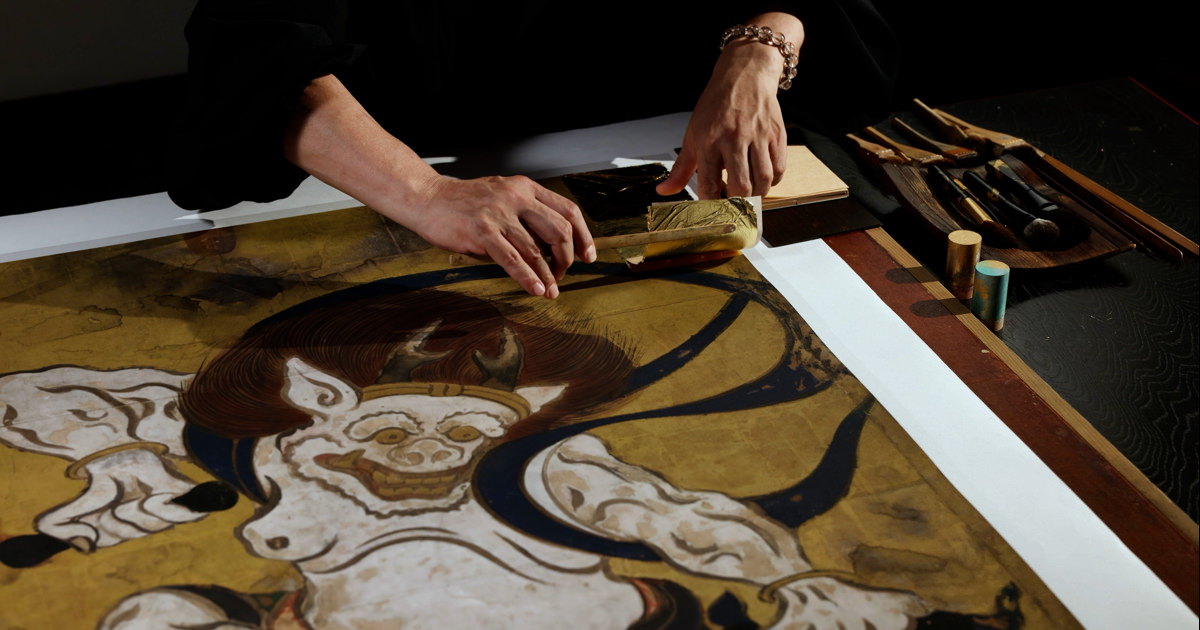Four Accomplishments in Ehatsu-no-ma
High-resolution facsimiles
- Material
- printed on washi paper
- Period of creation
- Tsuzuri Project Stage 6 2012–2013
- Recipient
- Kenninji Temple
Original
- Cultural property designation
- Important Cultural Property
- Artist
- Kaiho Yusho
- Historical era
- Azuchi-Momoyama (16th century)
- Material
- ink, color on washi paper
- Medium
- Ten sliding doors
- Size
-
2 panels : H186.0 × W84.0 cm
1 panel : H190.0 × W81.0 cm
1 panel : H190.0 × W226.0 cm
2 panels : H185.0 × W112.0 cm
4 panels : H198.0 × W139.0 cm - Collection
- Kenninji Temple
Description
These ten panels, which decorate the Ehatsu-no-ma room (the upper first room), are among the 50 sliding panels of the abbot‘s chambers of Kenninji Temple painted by Kaiho Yusho, who was involved in a revival of Kenninji Temple in the early modern era. Only this work is colored; nevertheless, it creates a quite different impression than the realistically colored pictures of the Kano school, as it has the flavor of an ink-and-wash painting. Yusho‘s style was initially influenced by the Kano school. Later, he departed from the Kano school style by introducing the styles of Gyokukan and Ryokai, eventually establishing his own style. The composition of this work gathers the objects related to the main theme in the center of the painting, leaving broad empty space on both sides of the long screen; this is not typical of the Kano school style and reflects his enthusiasm for his work.
*In order to view videos, it is necessary to consent to the use of cookies by our website.
If the videos are not displayed, please click the “Cookie Settings” and accept cookies.




